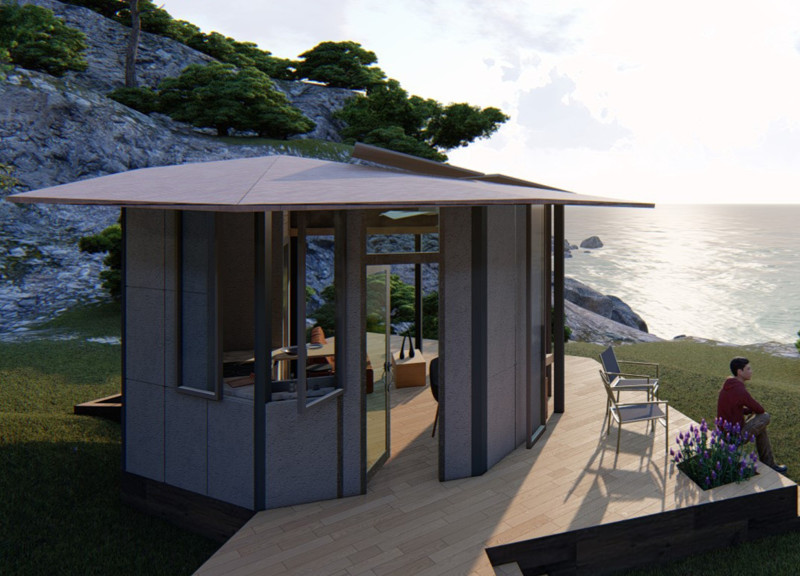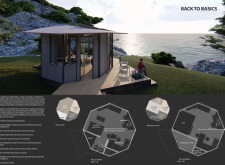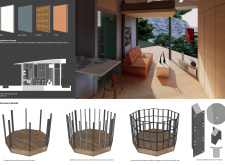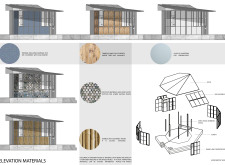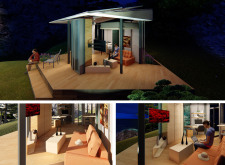5 key facts about this project
Design Efficiency and Spatial Arrangement
The layout of "Back to Basics" is characterized by its octagonal shape, promoting an open and flexible spatial arrangement that fosters interaction within the living environment. The design segments the interior into distinct zones for living, cooking, storage, and workspace, optimizing functionality within a limited footprint. Significant features include convertible furniture designed to adapt to various needs, ensuring efficient use of space. Natural light is maximized through extensive use of large windows and glass elements, connecting residents with the outdoors and enhancing the overall living experience.
Sustainable Materials and Construction
The project places a strong emphasis on sustainability through its choice of materials and construction techniques. Key components include recycled materials and locally sourced options, contributing to reduced carbon footprints. Structural elements consist of a combination of steel and concrete, providing durability while allowing for expansive interior spaces. Wood and bamboo are utilized within the interior, instilling warmth and texture while promoting a connection to nature. Energy efficiency is further enhanced through the incorporation of solar panels, ensuring the dwelling operates sustainably in alignment with contemporary environmental standards.
Innovative Outdoor Integration
"Back to Basics" enhances the concept of indoor-outdoor living through strategic architectural features. The design includes large overhangs that provide shade and protection from the elements, facilitating seamless transitions between interior spaces and outdoor areas. This integration supports a lifestyle that embraces nature, allowing for outdoor activities and relaxation. The modularity of the dwelling enables easy adaptation to site conditions and personal preferences, making it a flexible solution for diverse residential needs.
For further exploration of this project’s innovative architectural plans, sections, designs, and ideas, readers are encouraged to delve deeper into the project presentation. By assessing the unique features and sustainable technologies utilized in "Back to Basics," one can gain insights into contemporary architectural practices geared towards efficiency and environmental responsibility.


